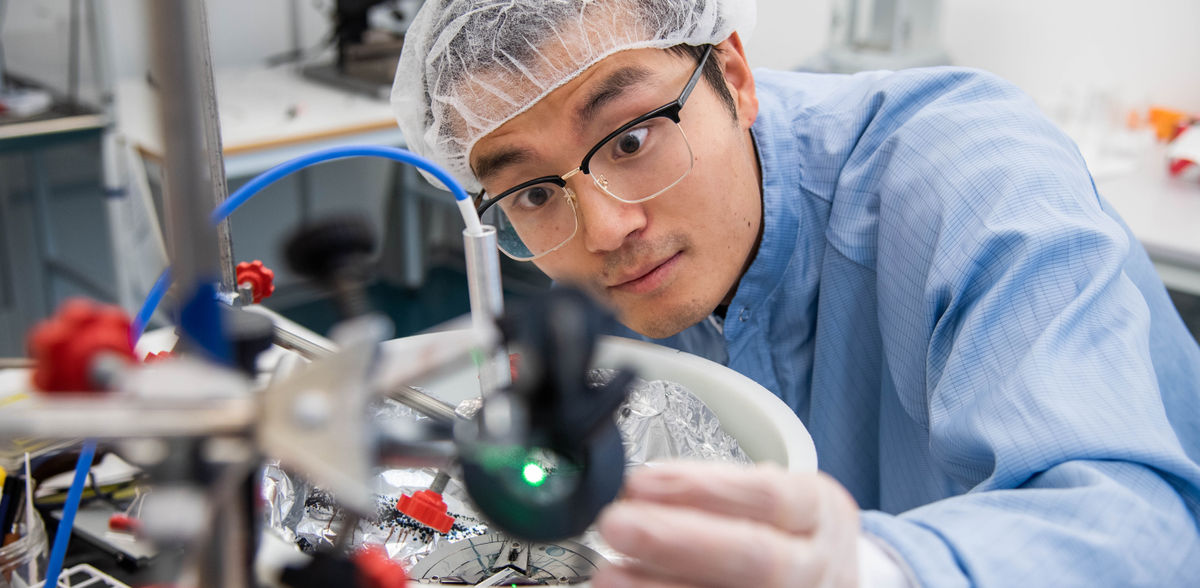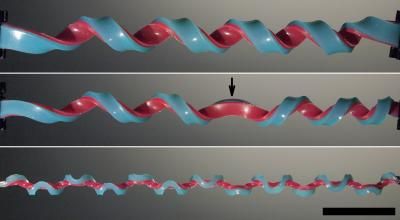Solar cell material can assist self-driving cars in the dark
Advertisement
Material used in organic solar cells can also be used as light sensors in electronics. This is shown by researchers at Linköping University who have developed a type of sensor able to detect circularly polarised red light. Their study, published in Nature Photonics, paves the way for more reliable self-driving vehicles and other uses where night vision is important.
Some beetles with shiny wings, firefly larvae and colourful mantis shrimps reflect a particular kind of light known as circularly polarised light. This is due to microscopic structures in their shell that reflect the electromagnetic light waves in a particular way.
Circularly polarised light also has many technical uses, such as satellite communication, bioimaging and other sensing technologies. This is because circularly polarising light carries a vast amount of information, due to the fact that the electromagnetic field around the light beam spirals either to the right or to the left.
The entire visible light spectrum
To detect circularly polarised light, you need a material that can sense which way the spiral is twisted. There are currently materials that can detect and decode circularly polarising light in almost the entire visible light spectrum, except for in the near-infrared region. Researchers at Linköping University have now developed a material, normally used for organic solar cells, to catch these particular light beams.
“Constructing high-quality sensors that can detect circularly polarising light in the near-infrared spectrum has long been a challenge. But thanks to further development of a material normally used in solar cells, we can now detect circularly polarised light across the entire visible light spectrum,” says Feng Gao, professor in the Department of Physics, Chemistry and Biology (IFM) at Linköping University.
This discovery paves the way for technical solutions where night vision is vital, such as in self-driving cars. The fact that the material is lightweight and the simple manufacturing process makes it suitable for use in small and cheap sensors.
Examine different materials
The solar cell material consists of polymers (long chains of carbohydrates) and may have a spherical molecular structure known as fullerene, or a different structure and the material is then called non-fullerene. The material used in the current study is non-fullerene, which has turned out to be an advantage in solar cells as well as in other uses such as light sensors.
This material’s ability to sense circularly polarising light is due to its chirality, that is which way the molecules interact with light. Chirality in molecules is most easily explained as a pair of hands. Your right hand and your left hand are built the same, but are mirror images of each other and thereby have somewhat differing functions. Thanks to chirality, various molecules can sense whether the electromagnetic radiation spirals to the right or to the left.
“The next step is to expand these trials to include several different materials and examine how molecules and light interact in them. This way, we hope to be able to increase effectivity,” says Li Wan, postdoc fellow at IFM.
Rui Zhang, also a postdoc fellow at IFM adds: “The packing control between molecules could be very important.”
Original publication
Other news from the department science
These products might interest you
Most read news
More news from our other portals
See the theme worlds for related content
Topic world Sensor technology
Sensor technology has revolutionized the chemical industry by providing accurate, timely and reliable data across a wide range of processes. From monitoring critical parameters in production lines to early detection of potential malfunctions or hazards, sensors are the silent sentinels that ensure quality, efficiency and safety.

Topic world Sensor technology
Sensor technology has revolutionized the chemical industry by providing accurate, timely and reliable data across a wide range of processes. From monitoring critical parameters in production lines to early detection of potential malfunctions or hazards, sensors are the silent sentinels that ensure quality, efficiency and safety.





























































